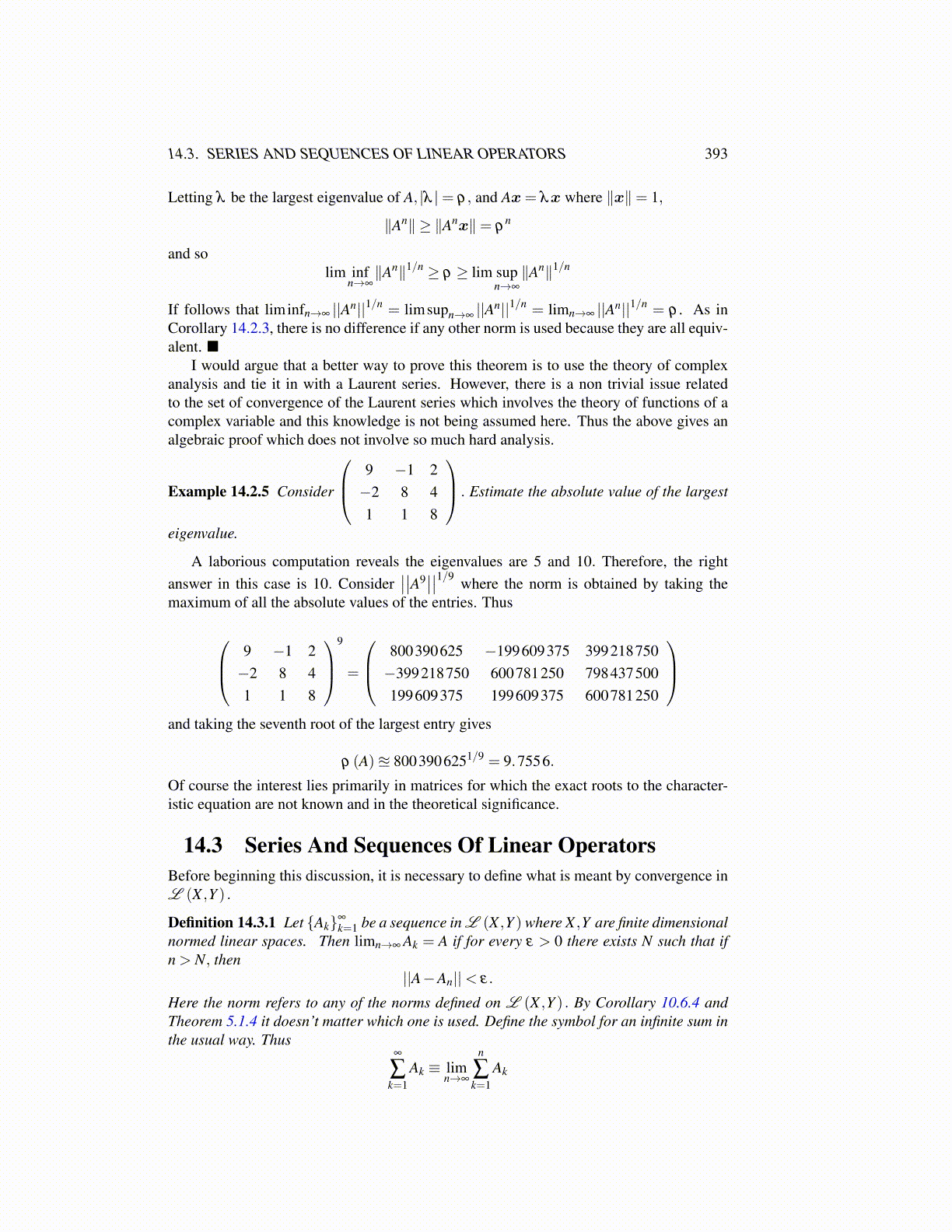
14.3. SERIES AND SEQUENCES OF LINEAR OPERATORS 393
Letting λ be the largest eigenvalue of A, |λ |= ρ, and Ax= λx where ∥x∥= 1,
∥An∥ ≥ ∥Anx∥= ρn
and solim inf
n→∞∥An∥1/n ≥ ρ ≥ lim sup
n→∞
∥An∥1/n
If follows that liminfn→∞ ||An||1/n = limsupn→∞ ||An||1/n = limn→∞ ||An||1/n = ρ . As inCorollary 14.2.3, there is no difference if any other norm is used because they are all equiv-alent. ■
I would argue that a better way to prove this theorem is to use the theory of complexanalysis and tie it in with a Laurent series. However, there is a non trivial issue relatedto the set of convergence of the Laurent series which involves the theory of functions of acomplex variable and this knowledge is not being assumed here. Thus the above gives analgebraic proof which does not involve so much hard analysis.
Example 14.2.5 Consider
9 −1 2−2 8 41 1 8
. Estimate the absolute value of the largest
eigenvalue.
A laborious computation reveals the eigenvalues are 5 and 10. Therefore, the rightanswer in this case is 10. Consider
∣∣∣∣A9∣∣∣∣1/9 where the norm is obtained by taking the
maximum of all the absolute values of the entries. Thus
9 −1 2−2 8 41 1 8
9
=
800390625 −199609375 399218750−399218750 600781250 798437500199609375 199609375 600781250
and taking the seventh root of the largest entry gives
ρ (A)≊ 8003906251/9 = 9.7556.
Of course the interest lies primarily in matrices for which the exact roots to the character-istic equation are not known and in the theoretical significance.
14.3 Series And Sequences Of Linear OperatorsBefore beginning this discussion, it is necessary to define what is meant by convergence inL (X ,Y ) .
Definition 14.3.1 Let {Ak}∞
k=1 be a sequence in L (X ,Y ) where X ,Y are finite dimensionalnormed linear spaces. Then limn→∞ Ak = A if for every ε > 0 there exists N such that ifn > N, then
||A−An||< ε.
Here the norm refers to any of the norms defined on L (X ,Y ) . By Corollary 10.6.4 andTheorem 5.1.4 it doesn’t matter which one is used. Define the symbol for an infinite sum inthe usual way. Thus
∞
∑k=1
Ak ≡ limn→∞
n
∑k=1
Ak